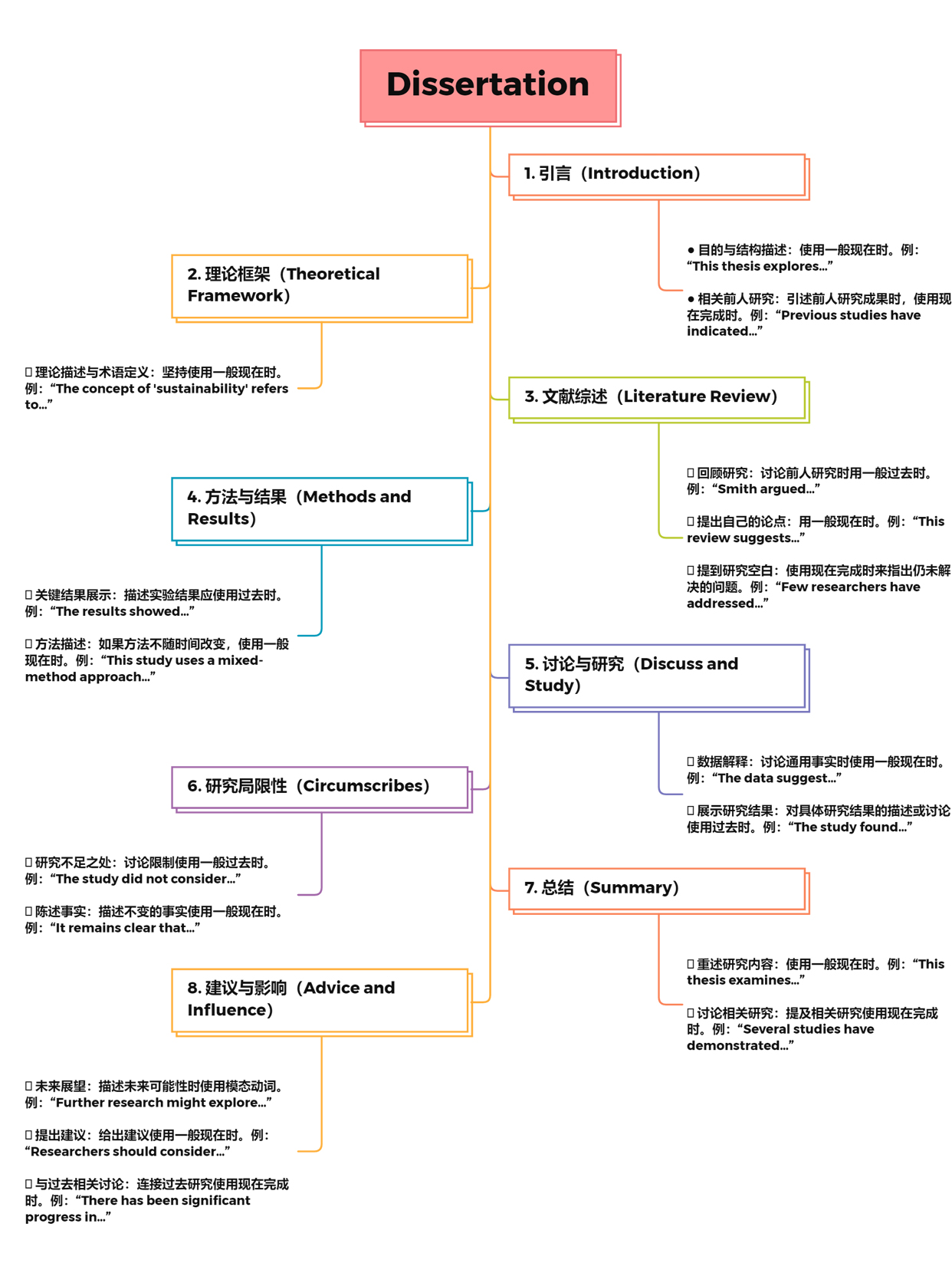
学术写作揭秘:论文各部分正确的时态运用指南
留学生必备!Dissertation 各部分用什么时态?
写论文的过程中,正确的时态使用是展示你对英语学术写作规范掌握的重要标志。这里为你详细解析不同论文章节应使用的时态,帮助你写出规范精确的学术论文。
1. 引言(Introduction)
2. 理论框架(Theoretical Framework)
3. 文献综述(Literature Review)
回顾研究:讨论前人研究时用一般过去时。例:“Smith argued…”
提出自己的论点:用一般现在时。例:“This review suggests…”
提到研究空白:使用现在完成时来指出仍未解决的问题。例:“Few researchers have addressed…”
4. 方法与结果(Methods and Results)
5. 讨论与研究(Discuss and Study)
6. 研究局限性(Circumscribes)
7. 总结(Summary)
8. 建议与影响(Advice and Influence)
未来展望:描述未来可能性时使用模态动词。例:“Further research might explore…”
提出建议:给出建议使用一般现在时。例:“Researchers should consider…”
与过去相关讨论:连接过去研究使用现在完成时。例:“There has been significant progress in…”

希望这篇指南能帮助你更好地掌握学术论文的时态使用,让你的论文更加专业和精准!如有疑问,欢迎来咨询交流。️
留学生学术论文辅导,选择DR.D,让我们携手开启留学之旅,为您的留学生活增添精彩!











